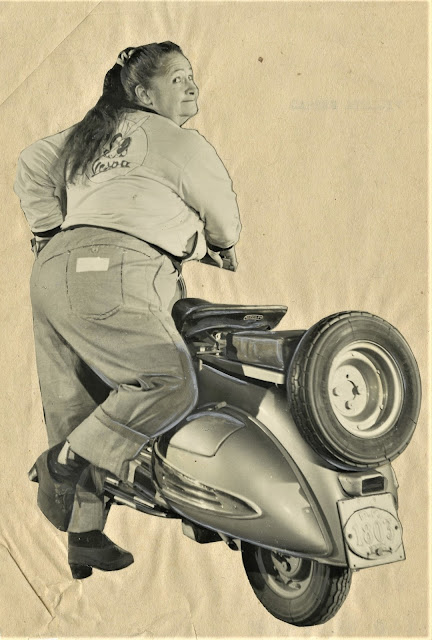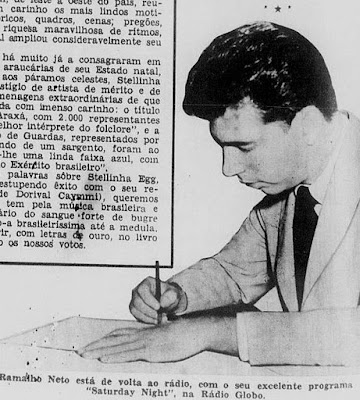El Cubanito - the man who covered Sonora Matancera's 'Cao cao mani picao' that hit Number One in Brazil on 11 August 1953, was none other than Alvaro Francisco de Paula, who was born on 24 November 1927, in Rio de Janeiro, Brazil.
El Cubanito fronted the orchestra of Waldyr Calmon for this particular disc that Copacabana Records knew could top the charts but was surprised, nevertheless, when it did.
Later on, El Cubanito formed his own big band and toured Brazil for years. He even recorded for Nilo Sergio's Musidisc label that released his recordings in stereo for the U.S. and Brazilian markets. At some stage Alvaro Francisco had to give up his post as a civil servant at the Ministry of Economy to dedicate his whole time to his act which was large.
Cao cao cao mani picao, cao cao
cao cao cao mani picao, cao cao
Lo quiere la gente (cao cao)
ay, lo dice la gente (cao cao)
pero le gusta a la gente (cao cao)
ay, lo baila la gente (cao cao).
Quiquiriquí picao, quiquiriquí picao, quiquiriquí picao
arriba é la tabla mani picao, cao cao.
A mi, qué me importa (cao cao)
ay, yo vivo mi vida (cao cao)
a ti, qué te importa (cao cao)
pero tú vives tu vida (cao cao).
Quiquiriquí picao, quiquiriquí picao, quiquiriquí picao
arriba é la tabla mani picao, cao cao.
Dame una candelita (allí fumé)
ay, dame una candelitta (allí fumé).
Quiquiriquí picao, quiquiriquí picao, quiquiriquí picao
arriba é la tabla mani picao, cao cao.
Cao cao cao mani picao, cao cao
eh maní picao, cao
arriba é la tabla maní picao, quiquiriquí
cao cao cao maní picao, cao cao
Ay, pero cao cao cao
arriba é la tabla mani picao, quiquiriquí
cao cao cao mani picao, cao cao.
'Cao, cao mani picao' - guaracha written by Jose Carbó Menéndez; it was originally recorded in Cuba by Sonora Matancera featuring Celia Cruz in her first recording with the band.
'Revista do Radio' tells its readers El Cubanito is a coloured-man and has recorded 'El gopecito' b/w 'El tiempo será testigo' two mambos...
El Cubanito's real name is Álvaro Francisco de Paula. He is a singer signed to Radio Mundial. Alvaro lives in Cachambim, a Meier suburb. He's married with no children. He really enjoys singing in the shower and Italian food is a must; he loves gnocchi as if he were an Italian. El Cubanito worships Our Lady of Immacule Conception and Saint Sebastian. He supports Madureira Atlético Club. He owns a parrot called Cao-Cao that he brought from Bahia. He likes gangster movies; he's a serious James Cagney fan. On the radio he enjoys recitals by Sylvio Caldas and Angela Maria. He shaves himself at home using razor blades; likes eau-de-colegne and lavender lotion by Atkinson's. El Cubanito prays before going to asleep.


'Revista do Radio' asked radio people what politician would succeed President Café Filho; most of them answered Ademar de Barros, a popular Sao Paulo governor would. Most of them actually flunked the test. The next President of Brazil would be Juscelino Kubtischek. Marta Janete was the only one who got it right!
In the small photo on the left El Cubanito smiles near a sedate Lucho Gatica in Rio de Janeiro; El Cubanito was a regular at the popular radio show 'Ciranda pelos bairros' (Merry-go-round in the suburbs) that brought radio singers to the outskirts of town to meet simple people who never wandered too far away from home.
Exuberance was El Cubanito's middle name.




















